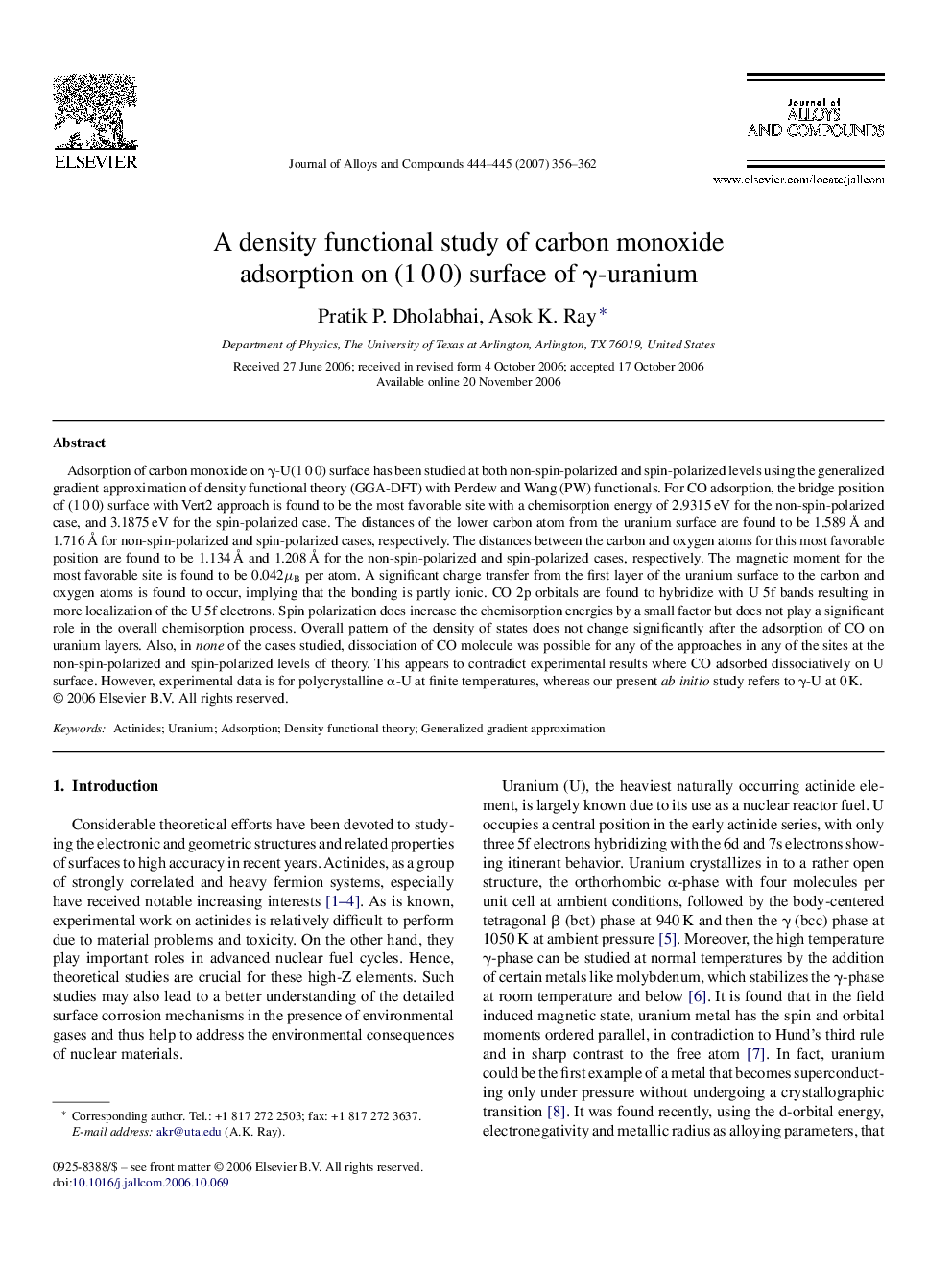| Article ID | Journal | Published Year | Pages | File Type |
|---|---|---|---|---|
| 1625856 | Journal of Alloys and Compounds | 2007 | 7 Pages |
Adsorption of carbon monoxide on γ-U(1 0 0) surface has been studied at both non-spin-polarized and spin-polarized levels using the generalized gradient approximation of density functional theory (GGA-DFT) with Perdew and Wang (PW) functionals. For CO adsorption, the bridge position of (1 0 0) surface with Vert2 approach is found to be the most favorable site with a chemisorption energy of 2.9315 eV for the non-spin-polarized case, and 3.1875 eV for the spin-polarized case. The distances of the lower carbon atom from the uranium surface are found to be 1.589 Å and 1.716 Å for non-spin-polarized and spin-polarized cases, respectively. The distances between the carbon and oxygen atoms for this most favorable position are found to be 1.134 Å and 1.208 Å for the non-spin-polarized and spin-polarized cases, respectively. The magnetic moment for the most favorable site is found to be 0.042μB per atom. A significant charge transfer from the first layer of the uranium surface to the carbon and oxygen atoms is found to occur, implying that the bonding is partly ionic. CO 2p orbitals are found to hybridize with U 5f bands resulting in more localization of the U 5f electrons. Spin polarization does increase the chemisorption energies by a small factor but does not play a significant role in the overall chemisorption process. Overall pattern of the density of states does not change significantly after the adsorption of CO on uranium layers. Also, in none of the cases studied, dissociation of CO molecule was possible for any of the approaches in any of the sites at the non-spin-polarized and spin-polarized levels of theory. This appears to contradict experimental results where CO adsorbed dissociatively on U surface. However, experimental data is for polycrystalline α-U at finite temperatures, whereas our present ab initio study refers to γ-U at 0 K.
